2024 Chevrolet Silverado EV RST’s Good Ideas Are Overshadowed By Its Bad Driving Experience
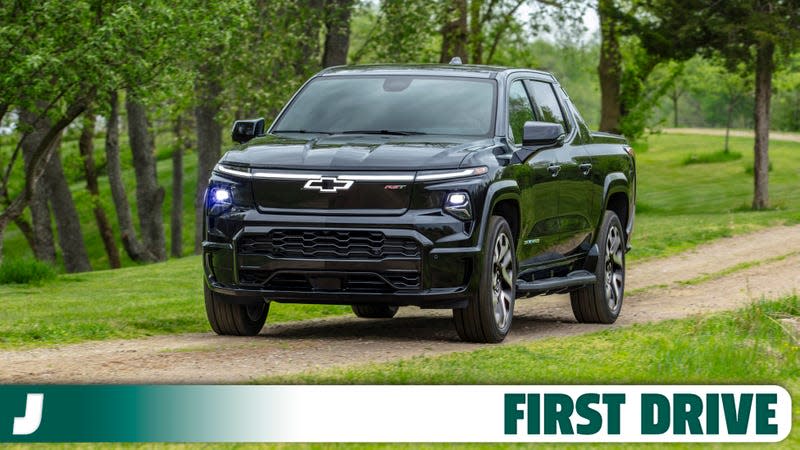
Chevrolet threw its hat into the electric-truck ring with the reveal of the Silverado EV in early 2022, and now, two and a half years later (and months after fleet deliveries of the WT work truck version began), the range-topping Silverado EV RST First Edition is finally ready to reach customer hands. With 754 horsepower, a 440-mile estimated range, 10,000 pounds of towing capacity and some intriguing tech and design features, the Silverado EV seems like just what truck buyers want from an electric pickup.
Problem is, the Silverado EV RST simply isn’t good to drive, and it definitely doesn’t feel worth the $96,495 price tag it carries (including destination). While some of the Silverado EV’s issues could be smoothed out with future software updates or mechanical tweaks, many of its downsides seem to be fundamental issues with the truck itself. That’s a shame, because the Silverado EV has some genuinely great, useful ideas and features not found on other trucks.
Full disclosure: Chevy flew me out to Michigan over the weekend to drive the Silverado EV and Equinox EV, as well as get a quick experience with the Blazer EV cop car. I was put up in the fabulous Shinola hotel in Detroit and was fed good food and drinks.
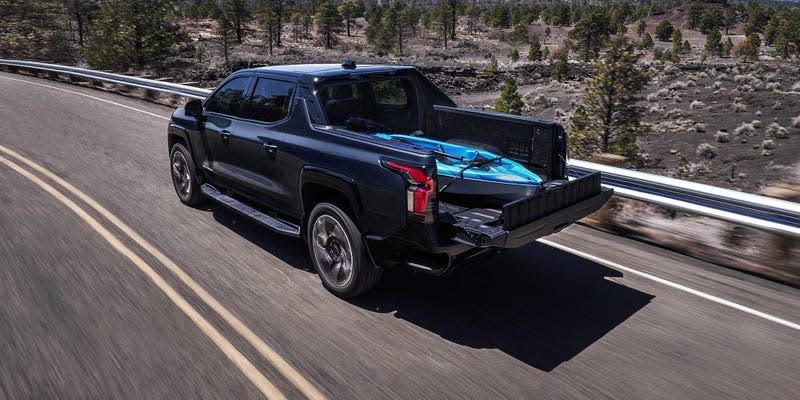
Chevy is only offering the Silverado EV in one packaging configuration, with a full four-door crew cab body and a 5-foot-11-inch bed. The Silverado EV RST measures 233.1 inches long, 83.8 inches wide and 78.7 inches tall overall; a gas Silverado crew cab with a 5-foot-8 bed is 1.2 inches shorter in length, 2.6 inches narrower in width, and 3.2 inches lower in height. Somehow, though, the EV’s 145.7-inch wheelbase is a couple inches shorter than that of the internal-combustion truck.
The Silverado EV uses the same Ultium platform as other electric General Motors trucks like the Hummer EV and upcoming GMC Sierra EV and Cadillac Escalade iQ, and it’s easily the most powerful truck Chevy has ever made. The RST First Edition features a pair of electric motors, one at each axle, putting out a total of 754 horsepower and 785 pound-feet of torque. That’s good enough to send the truck to 60 mph in under 4.5 seconds, about a second quicker than the most powerful gas-powered Silverados, but it’s still more than a second off the 1,000-hp Hummer. Chevy also says the Silverado EV RST can tow over 10,000 pounds and has a 1,500-pound payload, fairly comparable to the V8 Silverados.
Matching the Hummer is the Silverado EV’s 205-kWh battery pack, which gives it an estimated range of 440 miles, by far the most of any pickup currently on sale. That figure is Chevy’s own estimate and not an EPA estimate, because the Silverado is so heavy that it doesn’t need to be rated or tested by the EPA. It seems like the Silverado’s range will be easy to achieve in the real world, too. At 70-percent charge one Silverado I jump into has over 300 miles of indicated range, and even with the air conditioning blasting the truck’s efficiency doesn’t seem too bad.
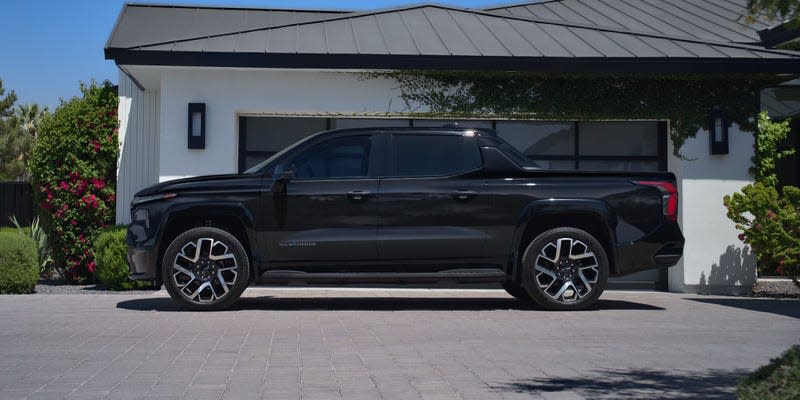
The Silverado EV can fast-charge at up to 350 kW, which is good enough to add 100 miles of range in ten minutes, but Chevy doesn’t quote a 10-to-80-percent charge time, likely because it takes much longer to fill that huge battery than the company would like to admit. One benefit of the truck’s mega battery, though, is its capability to power your home. Recently, Chevy invited journalists to a 10,000-square-foot, $25-million mansion in Beverly Hills where it simulated a power outage and then turned the house on using a Silverado EV. The truck could power that house for three days — or at least double that with electricity rationing — while an average suburban home could be powered for more than a week.
So, the Silverado’s stats are good on paper, and they seem to be easily matched in the real world. In the real world, though, is where the RSTfalls apart. At a private test track outside Ann Arbor, Chevy has us try out the Wide Open Watts mode that enables the powertrain’s full output. It activates quickly with the press of a button on the drive mode screen, making some loud Transformers-like noises and prepping the powertrain for the best possible launch. Some journalists clock times as low as 4.3 seconds in Chevy’s heavily supervised WOW tests, which is quite brisk considering the RST’s 9,119-pound curb weight. But the Silverado EV is genuinely hard to control and keep in a straight line under acceleration, to the point that it can be kinda scary. When I floor it in WOW mode the Silverado feels like it’s getting pushed around by strong winds, which it isn’t. Even without using the WOW mode, whether accelerating from a stop or from speed the truck is constantly shimmying around, impossible to keep straight without constantly making little-to-large steering corrections.
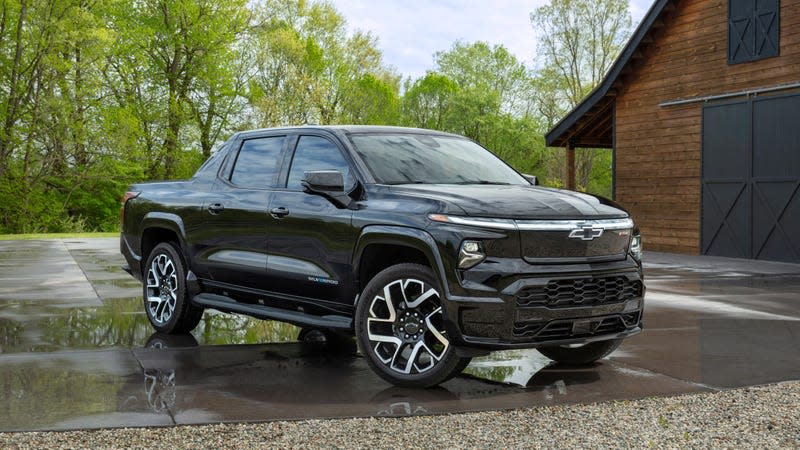
In Tour and Normal modes the steering is extremely light; the slightest twitch of the steering wheel prompts a larger reaction from the truck, causing it to wiggle and move around in the lane — the same problem that occurs under acceleration. It’s a chore to drive on both back roads and freeways, even with lane centering turned on. Sport mode gives the steering more weighting, but it’s still not great and the handling issue remains present. At low speeds around town the standard rear-wheel steering has linear action and definitely provides a nicer turning radius, but at anything more than parking lot speeds it makes the truck feel less stable to me, the opposite effect that a good rear-steer system should have.
I don’t know if the Silverado’s stability problems are because of how power is getting sent to the wheels or the overall steering and suspension tuning, but I’m sure a big part of the behavior is due to the tires, which seem far too skinny for how huge the wheels are and how big the truck is. The RST has a square setup using 275/50 all-season rubber, the same size as what a Rivian wears for its 22-inch wheels, but a Mercedes-AMG GLS63 with 23-inch wheels, for instance, has tires sized 285/40 up front and 325/35 in the rear. Even a 10- or 20-mm increase in tire width could assuage some of the Silverado’s issues.
Despite having four-corner adaptive air suspension, which can raise or lower itself by up to 2 inches at the driver’s behest, the Silverado EV doesn’t ride well either. I’m sure the RST First Edition’s 24-inch wheels are partially to blame, but I’ve driven plenty of other trucks and SUVs with almost-as-big wheels that ride much nicer. The suspension is at its comfiest in Tour mode, but then it’s overly floaty and still can be too shuddery over rough pavement, and no matter what mode I’m in there is a ton of body roll in corners.

Regenerative braking comes in two different strengths (or can be turned off completely), both of which offer true one-pedal driving. I prefer the High setting, though its initial deceleration can be a bit too abrupt. The control for the regen is in a cluster of modular buttons on the far-left side of the screen below the volume knob, which are blocked by the steering wheel at my ideal driving position. Instead of cycling between all three settings, pressing the button only toggles between regen off or the strength setting you’ve chosen, also bringing up a pop-up message at the bottom of the screen that you can tap to then bring up a menu that lets you choose what regen strength you want, which takes over the entire screen.
Another annoying point? The Silverado EV’s mandated low-speed pedestrian warning noise is loud inside the cabin, and it’s constantly humming even when you’re at a full stop. There’s no way to change how the noise sounds or its intensity, either.
Genuinely the best part of driving the Silverado EV is using Super Cruise, which provides hands-free Level 2 driving on over 400,000 miles of roads across America. Super Cruise is easily the best hands-free system on the market right now, and it does an excellent job of navigating curves, keeping the Silverado in its lane and dealing with surrounding traffic, especially with semi trucks around. Super Cruise can now do automatic lane changes without being prompted by the driver, though it does so a bit too often when it’s unnecessary. Silverado EV owners can use Super Cruise while towing, too.
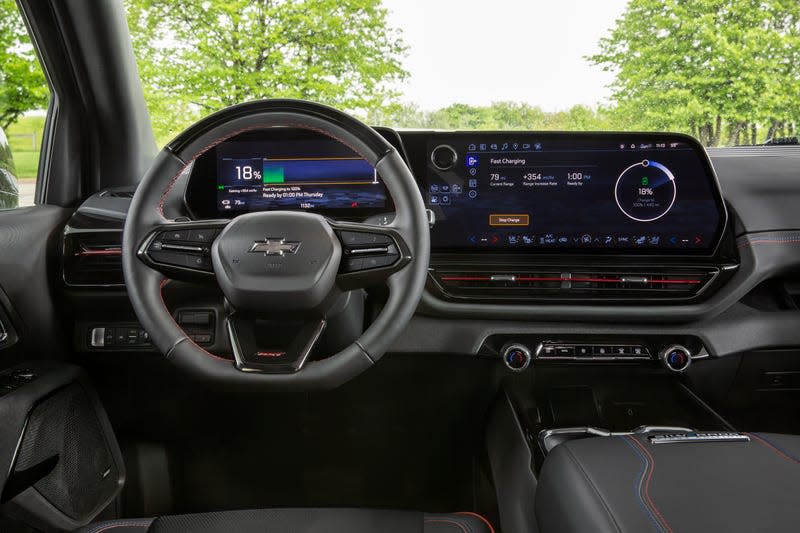
I was always a fan of how the Avalanche looked, so I think the Silverado EV’s styling is a lot more appealing than the normal gas-powered Silverado. The headlights and taillights are cool, I like the execution of the grille-less front end, and the surfacing of the body helps hide the height of the battery pack, at least with the standard running boards installed. The sail panels aft of the rear window don’t impede rearward visibility too badly — there’s a digital rear view mirror anyway — and visibility out of the front is surprisingly good thanks to a fairly short overhang and relatively thin pillars. It’s too bad the First Edition will only be offered in black or white, though, especially as the original reveal truck was painted a great bright blue color.
It looks good on the inside too, with a similar design theme to other new Chevy products. It has a large center console with cupholders and storage section that slides back to reveal a massive cubby, and the door pockets can hold multiple bottles and lots of other stuff. The visual shine immediately wears off when I actually sit in the truck and start touching things, though. Other than having a few interesting texture patterns, the whole thing looks and feels cheap as hell overall. The main touchpoints on the dashboard, door cards and center console are less plush than what you get in a Hyundai Kona, and there’s a ton of hard plastics in other prominent areas.
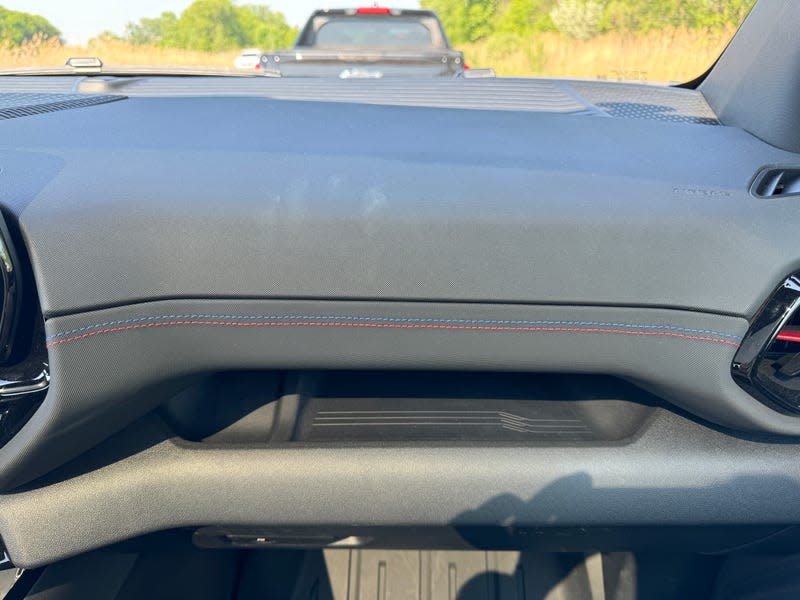
The seats, while heated and ventilated, aren’t very supportive and can’t be had with real leather. I like the contrasting blue-and-red stitching that’s all over the cabin, but on multiple trucks I get into, the stitching is extremely wavy, especially on the passenger side of the dashboard. The cabin is basically devoid of any other interesting trim, with only a few pieces of bright metal or even black plastic. The standard panoramic glass sunroof is giant but it doesn’t open or have a sunshade, and it’s not tinted enough. The digital rear view mirror is prone to glare, and the quality of the 360-degree camera system isn’t great. Also, the passenger side mirror has a zoomed-in funhouse effect to it that makes it nearly impossible for me to actually see cars in the lane next to me, though some other journalists didn’t seem to notice.
One bright spot inside is the infotainment system, of which much noise has been made about the fact that Apple CarPlay and Android Auto aren’t available at all. The Silverado EV has an 11-inch gauge cluster paired with a 17-inch central touchscreen that’s nicely placed atop the dash, plus a 14-inch head-up display. GM’s new software looks great and is super responsive, and there’s a good amount of customization available. The native Google Maps navigation is fantastic and well-integrated between the three screens; with that plus the ability to use apps like Spotify, I don’t miss having CarPlay. I also love that the usable area of the screen fills the strangely shaped surround and there are fairly thin bezels, as it’s much more interesting than just another rectangular screen. There are a pair of knobs for the climate controls and a few hard buttons for commonly used climate features, but the base of the touchscreen always shows a row of additional controls. The top of the screen also has a row of quick shortcuts to things like nav, media and drive modes, which is helpful, and the menus are easy to navigate.
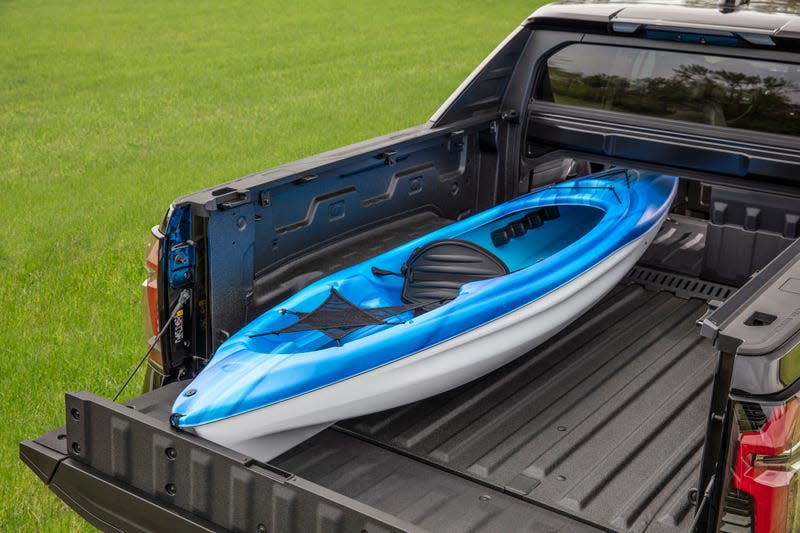
Range and other specs aside, I think the Silverado EV’s biggest selling point will be the Multi-Flex Midgate, an evolved version of the feature pioneered by the Avalanche. In a couple of easy actions the rear seat base flips forward and the seatback folds down, with a 60/40 split across the rear bench. Then, with the press of a button, the wall below the rear window folds down, creating an opening for the bed to flow into the cabin. You can also flip a couple of switches to pop out the rear window and stow it within that wall, then allowing you to fold the entire rear Midgate section down (though this obviously can’t be done with the split unless you put the window somewhere else).
With the Midgate open the Silverado EV has 9 feet of storage between the tailgate and the end point in the cabin, but with the truck’s complex (and useful) Multi-Flex Tailgate folded down there’s a total of 10 feet 10 inches of length available. Spec a folding tonneau cover and the Midgate becomes even more appealing, letting you carry longer items while protecting them from the elements. Truck customers will also love the powered frunk, which offers 10.7 cubic feet of storage space and has a 120-volt power outlet. There are also four 120-volt outlets and a 240-volt outlet in the bed, and a power bar accessory can be plugged into the charge port for additional outlets.
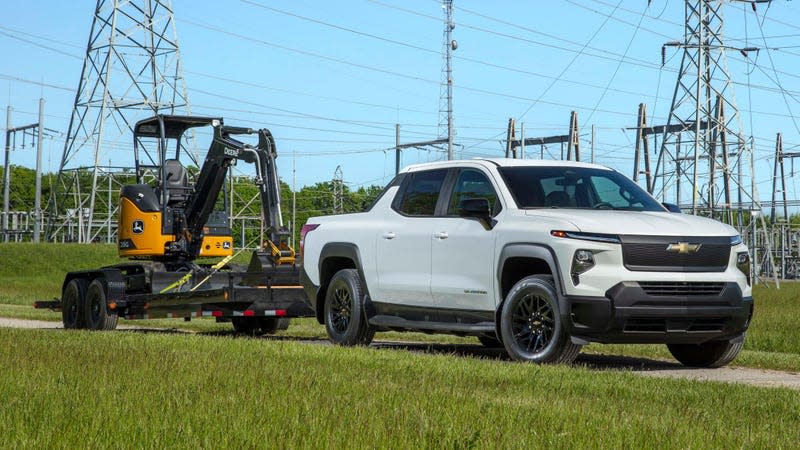
At the launch event Chevy has some WT trims of the Silverado EV available for us to try out, and the work truck’s driving experience is much better than the RST. The WT’s dual-motor powertrain puts out 510 hp and 615 lb-ft, enough for it to still be plenty quick, and the WT’s range is greater still at an EPA-estimated 450 miles with the bigger battery option (the lower-end WT will do 393 miles). With no drive modes or configurable chassis and powertrain settings to go through, and the WT’s steering tuning is far better, probably helped by the lack of four-wheel steering. The WT also ditches the air suspension and has 18-inch wheels, resulting in pretty great ride quality with a lot less body roll than the RST.
But the WT’s interior is even more low rent, and not just because it’s a work truck. (It still starts at over $75,000, after all.) The WT has a standalone, smaller center screen and a smaller gauge cluster screen that look like afterthoughts. Unlike with the bigger screen the WT has CarPlay capability, but because of the smaller size the native infotainment system isn’t as good as in the RST. There’s no height adjustability for the seat, so I can’t get into an ideal driving position, The WT also can’t be had with the Midgate or the fancy tailgate, so it can’t accomplish as many work-related things.
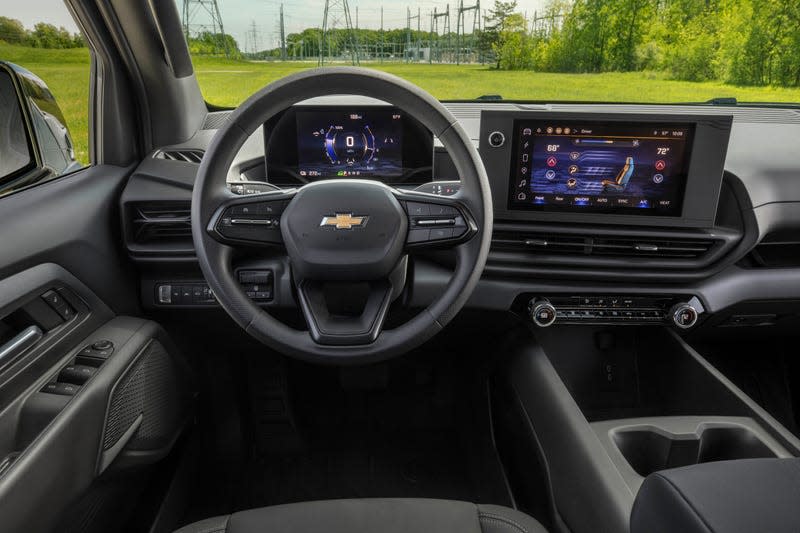
Coming in the second half of this year will be WT, non-First Edition RST and mid-range LT trim levels for retail customers, but Chevy hasn’t detailed specs, features or prices for any of those models yet, and the off-road-ready Trail Boss model won’t go on sale until next year. If the LT gets the RST’s tech and features but the WT’s simpler chassis and powertrain setup it could be great, though it will almost surely start at over $80,000. Though it wins out on range and that Midgate is awesome, when put against existing (and cheaper) electric pickup trucks like the Rivian R1T and Ford F-150 Lighting, the Silverado EV RST just isn’t good enough.
Mostly, I can’t help but think the Silverado EV would be a much better truck if there was less truck. Many of the RST’s problems seem to stem from the truck being so big and hefty to satisfy what truck buyers say they want, but imagine a Silverado EV that’s scaled down by like 30 percent. Sure, you might get a lower range and worse towing capacity, but putting the Silverado EV’s styling, Midgate, powertrain engineering and tech suite in a more reasonably sized package could make for an actual winner — or, at least, something that lands on the EV truck podium.
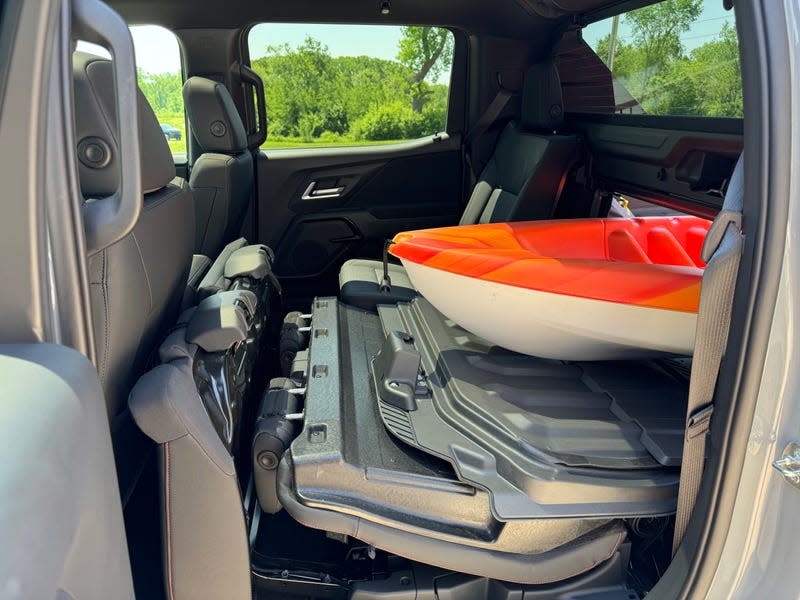
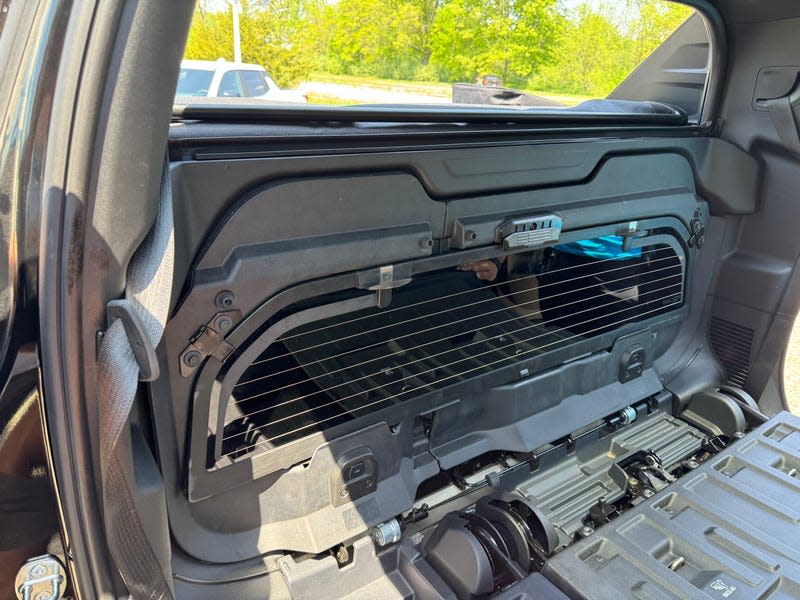
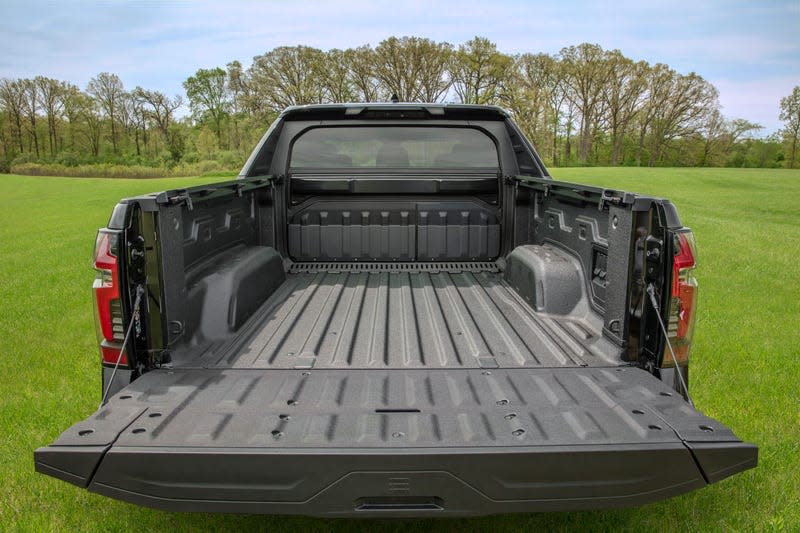
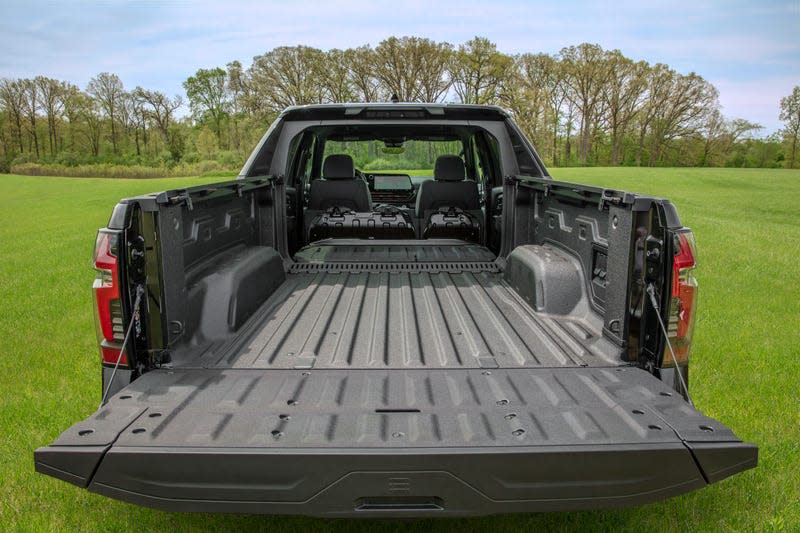

 Yahoo Autos
Yahoo Autos 